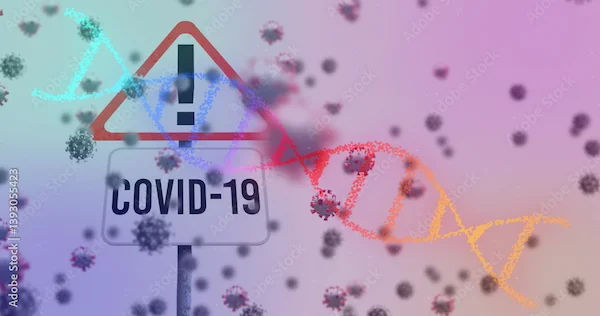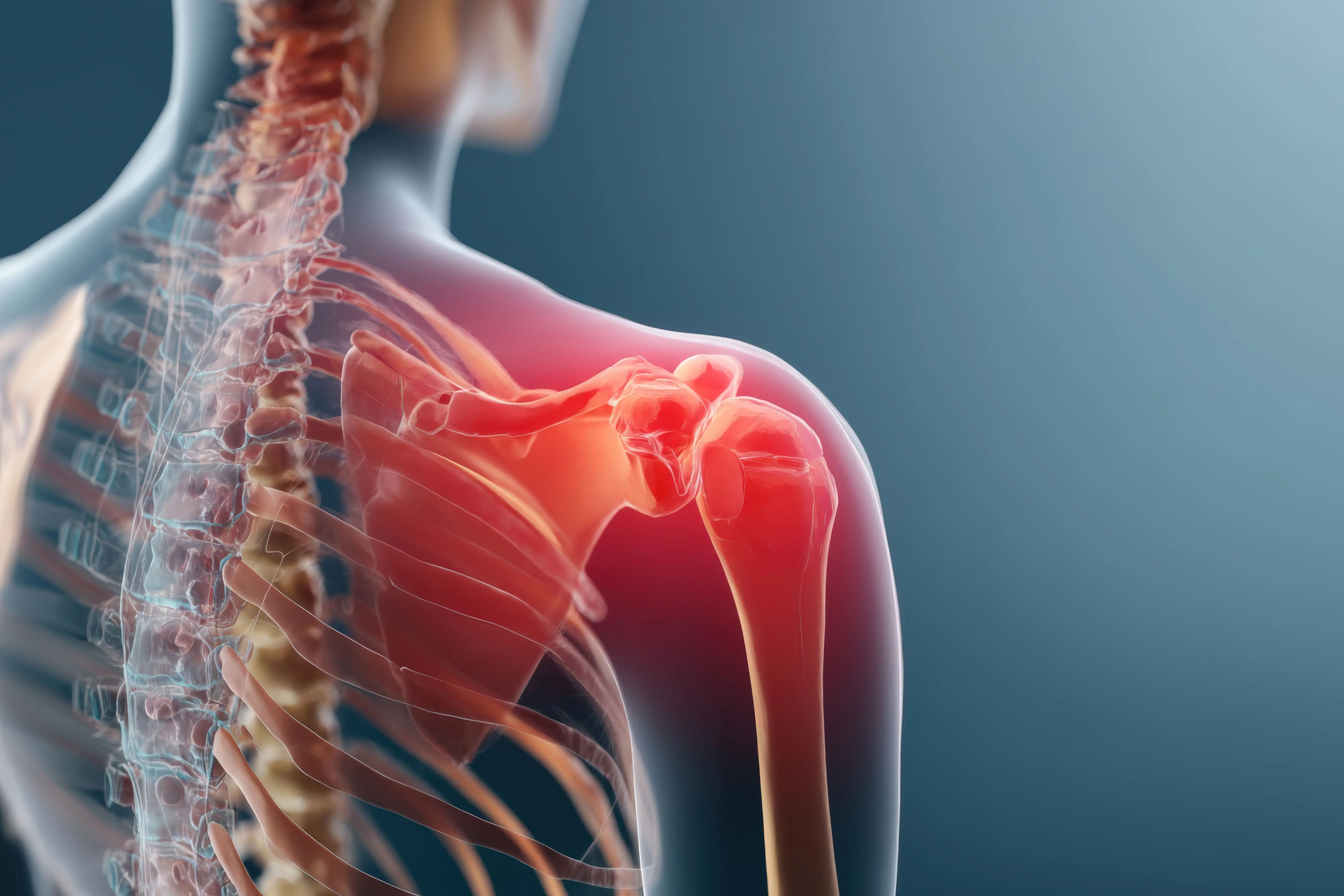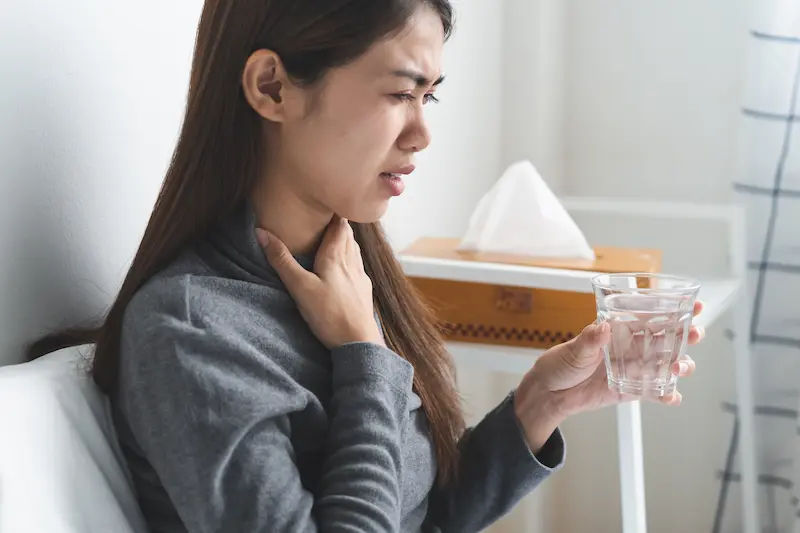Guide to pulmonology
Learn about pulmonology, the medical specialty for the respiratory system. Explore articles on asthma, COPD, pneumonia, lung cancer, and their diagnosis and treatment.
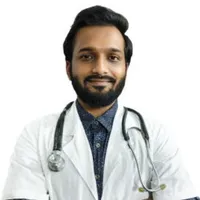
Written by Dr. Md Yusuf Shareef
Reviewed by Dr. Mohammed Kamran MBBS, FIDM
Last updated on 24th Oct, 2025
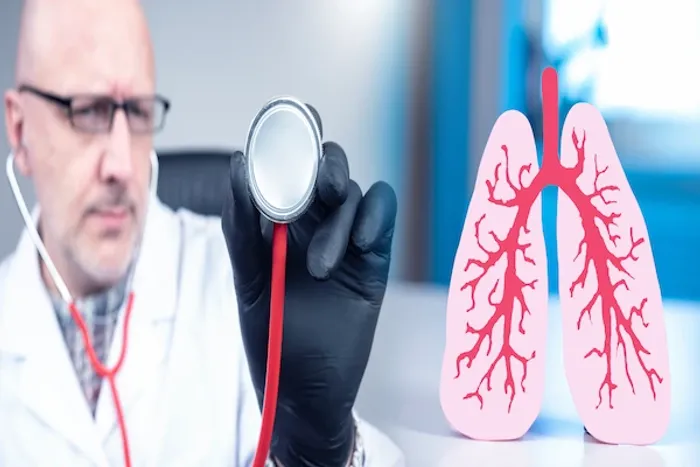
Introduction
If you’ve ever searched a hospital website’s category/pulmonology section and wondered what exactly a lung specialist does, you’re in the right place. Pulmonology focuses on diseases of the lungs and breathing: asthma, COPD, pneumonia, sleep apnea, interstitial lung disease, pulmonary hypertension, and more. Whether you’re dealing with a nagging cough, shortness of breath, or a recent abnormal chest X-ray, understanding the category/pulmonology pathway can make your next steps clearer and less stressful.
In this friendly, evidence-based guide, we explain how the respiratory system works, the most common lung conditions, the tests your clinician may order (like spirometry and CT scans), the treatments you might be offered (from inhalers to pulmonary rehab), and practical ways to prevent flare-ups. You’ll also learn when symptoms need urgent attention, what to expect at a pulmonology appointment, and how telehealth and home testing can simplify care. If symptoms persist beyond two weeks or you feel your breathing worsening, consult a doctor online with Apollo 24|7 for further evaluation. Let’s breathe easier together as we unpack everything you need to know from the category/pulmonology perspective.
Understanding Pulmonology
Pulmonology is the medical specialty dedicated to diseases of the respiratory system—your airways, lungs, and the muscles and blood vessels involved in breathing. In most hospital websites, the category/pulmonology section serves as your front door for lung-related care, consolidating information on conditions, tests, and treatments.
What do pulmonologists treat?
- Airways diseases: asthma, chronic obstructive pulmonary disease (COPD), bronchiectasis
- Infections: pneumonia, tuberculosis
- Sleep-related breathing disorders: obstructive sleep apnea (OSA)
- Interstitial lung diseases (ILD): pulmonary fibrosis
- Pulmonary vascular conditions: pulmonary hypertension
- Thoracic oncology: lung cancer and its complications
Pulmonologists vs other specialists
- Family medicine/primary care: often first to evaluate coughs and colds, then refer to pulmonology when symptoms persist.
- Allergists/immunologists: overlap with asthma/allergies; co-manage patients.
- Cardiologists: collaborate on breathlessness when heart-lung causes overlap.
- Thoracic surgeons: perform lung biopsies, resections, and surgical treatments.
Care pathway in the category/pulmonology clinic
- Initial visit: history, physical exam, basic tests (spirometry, chest X-ray).
- Advanced diagnostics: CT chest, bronchoscopy, sleep study as needed.
- Treatment plan: inhalers, medications, rehab, lifestyle changes, and follow-up.
Unique insight: Think of category/pulmonology as a hub that coordinates with multiple specialties; clear communication between these teams often predicts better outcomes for complex cases like ILD or lung cancer.
Consult a Top General Physician
The Respiratory System in Plain Language
Understanding the basics helps you make sense of tests and treatments.
Upper vs lower respiratory tract
- Upper: nose, sinuses, throat—warms and filters air, traps particles.
- Lower: trachea, bronchi, bronchioles, and alveoli—where gas exchange occurs.
How breathing and gas exchange work?
- The diaphragm and chest muscles create negative pressure to draw in air.
- Oxygen moves into blood at the alveoli, while carbon dioxide is exhaled.
- In diseases like COPD or ILD, this exchange becomes inefficient, leading to shortness of breath and fatigue.
Why oxygen levels matter?
- Pulse oximeters estimate oxygen saturation (SpO2). Readings below 92–94%—especially with symptoms—warrant evaluation.
- Home monitoring can be helpful, especially during exacerbations, recovery from pneumonia, or suspected sleep apnea. If your home oximeter shows persistently low readings, book a visit with Apollo 24|7 to review whether further tests or oxygen therapy at home are appropriate.
Common Conditions Pulmonologists Treat
Asthma vs COPD: key differences
- Asthma: usually starts earlier in life, variable symptoms, airway inflammation, often reversible narrowing. Triggers include allergens, exercise, and infections.
- COPD: typically after 40 with smoking or biomass exposure; persistent airflow limitation; cough with sputum; progressive breathlessness. Evidence-based management from GOLD guidelines includes inhaled bronchodilators and pulmonary rehabilitation.
- LSI/long-tail terms: asthma vs COPD differences; what does a pulmonologist treat.
Pneumonia, TB, and other infections
- Pneumonia: fever, cough, chest pain, and breathlessness; diagnosed by imaging (X-ray, sometimes CT). Vaccination against influenza and pneumococcus reduces risk.
- Tuberculosis: chronic cough, night sweats, weight loss; requires specific tests and prolonged antibiotics. Early detection is key to prevent spread.
Sleep apnea and snoring disorders
- Obstructive sleep apnea (OSA): pauses in breathing during sleep, loud snoring, daytime sleepiness. Confirmed via sleep study or home sleep test. CPAP and weight management are mainstays.
Interstitial lung disease and pulmonary fibrosis
- ILD: scarring in the lung interstitium; symptoms include progressive breathlessness and dry cough. High-resolution CT helps diagnose; antifibrotic medications can slow progression in some forms. A multidisciplinary discussion (pulmonology, radiology, pathology) improves diagnostic accuracy.
Pulmonary hypertension
High pressure in the lung arteries; symptoms may mimic asthma or deconditioning. Echo and specialized testing confirm. Treatments include targeted vasodilators and oxygen when appropriate.
Lung cancer and screening
Leading cause of cancer death globally. Annual low-dose CT (LDCT) is recommended for high-risk adults (e.g., ages 50–80 with ≥20 pack-years who currently smoke or quit within 15 years) [5]. Early detection saves lives. If you qualify, ask your doctor about LDCT; Apollo 24|7 can help coordinate referrals.
- Unique insight: Maintain a “condition timeline.” Note triggers, treatments, and responses. This simple habit helps your category/pulmonology team fine-tune your plan.
Symptoms, Red Flags, and When to Seek Help?
Common symptoms to track
- Chronic cough: dry or productive, duration >8 weeks warrants evaluation.
- Breathlessness: with exertion or at rest; note what activities trigger it.
- Wheeze, chest tightness, recurrent chest infections, snoring with daytime sleepiness.
Red flags
- Severe shortness of breath at rest
- Blue lips or fingertips (cyanosis)
- Confusion, fainting, chest pain
- Coughing up blood
- Rapidly worsening breathlessness after illness (e.g., flu)
- Any of these require urgent care.
When to go to ER vs book an appointment?
- Go to the ER immediately for severe distress, low oxygen, or chest pain.
- Book a pulmonology appointment for persistent cough, suspected asthma/COPD, snoring with
- daytime sleepiness, frequent infections, or abnormal chest imaging.
If symptoms persist beyond two weeks, consult a doctor online with Apollo 24|7 for further evaluation; they can guide whether you need urgent in-person care.
Unique insight: Pair symptom notes with home metrics (peak flow or oximeter readings). A drop in peak flow of 20% from your baseline is a useful early warning in asthma action plans [6].
Tests and Diagnosis in Category/Pulmonology
Lung function tests
- Spirometry: measures how much and how fast you exhale; key for diagnosing asthma and COPD.
- Follow ATS/ERS standards for accuracy. Ask for a bronchodilator test to assess reversibility.
- Advanced tests: FeNO (airway inflammation), lung volumes, diffusion capacity (DLCO) to assess gas exchange.
Imaging
- Chest X-ray: initial look for infection, fluid, or masses.
- CT scan: detailed anatomy; high-resolution CT is crucial in ILD.
- Low-dose CT screening: for eligible high-risk patients to detect early lung cancer.
- LSI terms: lung function test spirometry; lung cancer screening low-dose CT.
Bronchoscopy and biopsy
A flexible scope examines airways, collects samples, removes mucus plugs, or places stents. Risks include bleeding or transient low oxygen; benefits often outweigh risks when diagnosis is uncertain.
Sleep study (polysomnography) and home sleep tests
Polysomnography measures breathing, oxygen, brain waves, and movement overnight. Home tests are simpler and adequate for many suspected OSA cases. CPAP titration helps find the right pressure.
Blood tests, ABG, and allergy testing
- Arterial blood gas (ABG) quantifies oxygen and carbon dioxide precisely.
- Allergy testing can identify triggers for asthma or rhinitis.
- If your doctor orders labs (e.g., full blood count, IgE, vitamin D), Apollo 24|7 offers a convenient home collection for tests, saving travel and wait time.
Unique insight: Bring your inhalers and any prior imaging on a USB or share links in your patient portal. Side-by-side review speeds and sharpens diagnosis.
Treatments and Living Well with Lung Conditions
Inhalers and nebulizers
- Device types: metered-dose inhaler (MDI), dry powder inhaler (DPI), and soft mist inhaler.
- Technique matters more than brand. Use a spacer with MDIs to improve delivery. Ask your clinician to watch your technique annually.
- Nebulizers deliver medication over several minutes—useful during severe symptoms or for those who struggle with inhalers.
- LSI: how to use an inhaler correctly.
Oxygen therapy and home monitoring
Prescribed when resting or exertional SpO2 remains low; can be portable for mobility. Oxygen therapy at home improves outcomes in select COPD patients with chronic hypoxemia. Monitor SpO2 during activity as directed.
Pulmonary rehabilitation
- A structured program of supervised exercise, breathing techniques, education, and counseling. Robust evidence shows improvements in breathlessness, exercise tolerance, and quality of life for COPD and other chronic lung diseases [8]. Ask about center-based vs home-based options; adherence matters more than location.
- LSI: pulmonary rehabilitation exercises.
Medications
- Bronchodilators: short-acting for relief, long-acting for control (e.g., LABA, LAMA).
- Corticosteroids: inhaled for asthma control; short courses orally for flare-ups.
- Antibiotics: for bacterial infections or COPD exacerbations when indicated.
- Antifibrotics: for certain fibrotic ILDs to slow decline.
- Biologics: targeted asthma therapies for severe eosinophilic or allergic phenotypes.
Procedures
- Thoracentesis to remove excess fluid around the lungs.
- Endobronchial valves or stents for specific airway problems.
- Surgery or stereotactic radiation for early lung cancers.
Unique insight: Keep a “rescue vs control” medication checklist on your phone. Label green (daily control) and red (rescue). This simple visual reduces common mix-ups during flares.
Prevention, Lifestyle, and Environmental Health
Vaccines and infection control
- Annual influenza and pneumococcal vaccines reduce hospitalizations for high-risk groups.
- Hand hygiene, masks in crowded indoor spaces during outbreaks, and prompt testing/treatment of respiratory infections can prevent exacerbations.
Smoking cessation and vaping facts
Quitting smoking is the single most effective way to slow COPD progression and reduce lung cancer risk Vaping isn’t harmless; it can irritate airways and is linked with lung injury in some cases.
Combine counseling, nicotine replacement, and medications (varenicline or bupropion) for best success. Apollo 24|7 clinicians can help you build a quit plan.
Air quality and triggers
- Indoors: reduce dust mites, mold, and pet dander; use exhaust fans; avoid incense and aerosol irritants.
- Outdoors: check AQI; limit strenuous activity on high-pollution days; consider N95 masks if sensitive. LSI: air pollution and lungs.
Exercise, nutrition, and breathing techniques
- Regular aerobic and strength exercise improves endurance; start low and go slow.
- Nutrition: adequate protein supports respiratory muscles; maintain a healthy weight to improve OSA and COPD symptoms.
- Techniques: pursed-lip breathing and diaphragmatic breathing ease dyspnea during activities.
Unique insight: A cheap box fan with a high-grade filter can be a DIY air cleaner during smoke or pollution events—handy if you don’t have a HEPA purifier.
Special Situations and Care Pathways
Children and adolescents
Asthma is the most common chronic pediatric lung disease. Ensure correct inhaler spacers and school action plans. Growth and development considerations affect dosing .
Pregnancy and lung health
Asthma control is crucial to protect mother and fetus; many inhaled medications are safe in pregnancy. Untreated sleep apnea increases risk for hypertension—ask about screening if symptoms exist.
Occupational lung exposures
Dusts (silica), fumes, and chemicals can cause or worsen lung disease. Share your job tasks with your category/pulmonology team. Protective equipment and job modifications can be lifesaving.
Telehealth, remote monitoring, and second opinions
Teleconsults help optimize chronic care, review inhaler technique, and adjust action plans. Remote devices (connected peak flow meters, oximeters) provide trend data that inform care.
Preparing for your pulmonology visit and cost-savvy tips
- Bring a med list, prior scans, and a symptom timeline. Note goals (e.g., climb stairs without stopping).
- Ask about generic inhalers, patient-assistance programs, and home-based pulmonary rehab options if access is limited.
- If your condition does not improve after trying these methods, book a physical visit to a doctor with Apollo 24|7 for a thorough examination.
Conclusion
Breathing is life—and when it’s hard to breathe, everything feels harder. The category/pulmonology pathway exists to find out why you’re breathless or coughing and to guide you toward relief. Now that you’ve seen how the respiratory system works, what the common conditions look like, and which tests and treatments matter most, you can take confident, concrete steps: track your symptoms, learn proper inhaler technique, keep vaccinations up to date, and build a personalized action plan. For many people, small, consistent habits—like checking air quality before exercising or practicing pursed-lip breathing—have outsized effects on daily comfort.
Remember, you don’t have to navigate this alone. If your cough or breathlessness lasts more than two weeks, or if a flare isn’t improving, consult a doctor online with Apollo 24|7 for next steps. They can help decide whether you need spirometry, imaging, a sleep study, or a specialist visit. If labs are ordered, Apollo 24|7 offers home sample collection to make testing easier. With the right care team and a few practical tools, most people living with lung conditions breathe better, move more, and worry less. Use this guide as your anchor the next time you visit the category/pulmonology section—and make your next breath a little easier than the last.
Consult a Top General Physician
Consult a Top General Physician

Dr. Dhanraj K
General Physician/ Internal Medicine Specialist
25 Years • MBBS, MD Internal Medicine - Osmania Medical College, Hyderabad
Hyderabad
Apollo Hospitals Jubilee Hills, Hyderabad
(400+ Patients)

Dr. Jagadeesh K H
General Physician/ Internal Medicine Specialist
7 Years • MBBS, DNB
Bengaluru
Apollo Clinic, Sarjapur Road, Bengaluru
Dr. Srijita Karmakar
Family Physician
1 Years • MBBS
Kolkata
KVC CLINIC, Kolkata

Dr. Smitha Nagaraj
General Physician/ Internal Medicine Specialist
15 Years • MBBS, Diploma in Family Medicine
Bengaluru
Apollo Medical Center, Marathahalli, Bengaluru

Dr. Divyashree K
General Physician/ Internal Medicine Specialist
5 Years • MBBS
Bengaluru
Apollo Clinic, JP nagar, Bengaluru
Consult a Top General Physician

Dr. Dhanraj K
General Physician/ Internal Medicine Specialist
25 Years • MBBS, MD Internal Medicine - Osmania Medical College, Hyderabad
Hyderabad
Apollo Hospitals Jubilee Hills, Hyderabad
(400+ Patients)

Dr. Jagadeesh K H
General Physician/ Internal Medicine Specialist
7 Years • MBBS, DNB
Bengaluru
Apollo Clinic, Sarjapur Road, Bengaluru
Dr. Srijita Karmakar
Family Physician
1 Years • MBBS
Kolkata
KVC CLINIC, Kolkata

Dr. Smitha Nagaraj
General Physician/ Internal Medicine Specialist
15 Years • MBBS, Diploma in Family Medicine
Bengaluru
Apollo Medical Center, Marathahalli, Bengaluru

Dr. Divyashree K
General Physician/ Internal Medicine Specialist
5 Years • MBBS
Bengaluru
Apollo Clinic, JP nagar, Bengaluru
More articles from General Medical Consultation
Frequently Asked Questions
What does a pulmonologist treat?
Pulmonologists treat lung and breathing problems such as asthma, COPD, pneumonia, sleep apnea, interstitial lung disease, pulmonary hypertension, and lung cancer. If you’re unsure where to start, book a pulmonology specialist near me via Apollo 24|7.
When should I see a lung doctor for a chronic cough?
If a cough lasts more than 8 weeks, is accompanied by breathlessness, fever, weight loss, or blood, see a pulmonologist. Persistent cough when to see a doctor: sooner if you have red flags or underlying conditions.
How is a lung function test (spirometry) done?
You’ll take a deep breath and blow forcefully into a device that measures airflow. It’s quick and safe. Lung function test spirometry helps diagnose asthma vs COPD differences and guides treatment.
Is a bronchoscopy painful or risky?
Bronchoscopy is done with sedation; you shouldn’t feel pain. Risks include temporary sore throat, low oxygen, or mild bleeding. Ask about bronchoscopy procedure risks and benefits in your case.
Who should get lung cancer screening with low-dose CT?
Adults 50–80 with a 20 pack-year smoking history who currently smoke or quit within 15 years should discuss annual low-dose CT lung cancer screening with their clinician.
